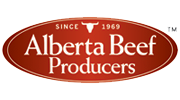Weak Calf Syndrome
| Project Code: | 0007-034 |
| Completed: | March 2008 |
Project Title:
Investigation into the causes of ‘stillbirth/perinatal weak calf syndrome’ and early neonatal mortality
Researchers:
Dr. Cheryl Waldner cheryl.waldner@usask.ca
Cheryl Waldner, DVM (Western College of Veterinary Medicine), Richard Kennedy, DVM (Pincher Creek Veterinary Clinic)
Calves born with ‘weak calf syndrome’ are often depressed and unable to stand, walk or nurse without assistance. Caring for these calves takes a lot of time and work but is rarely successful. Some of these calves die within minutes after birth while others live for a few days. A postmortem autopsy rarely gives obvious clues as to why the animal died. However, detailed tissue examinations often show damage to the tongue, diaphragm, muscle, heart and thyroid gland.
Objectives:To identify factors that may play a role in ‘weak calf syndrome’ and early calf mortality.
What They Did:Two sets of data were used. Seven beef herds (1603 cows and heifers) near Caroline, Alberta were exposed to breeding in 2005, and six herds (1703 cows and heifers) were exposed in 2006. Data from the Western Interprovincial Scientific Studies Association (WISSA) study were also used. This included 205 herds (33,000 cows exposed to breeding in 2001) in B.C., Alberta, and Saskatchewan. Detailed management records (breeding and calving or abortion dates, cow age, vaccination records, breed, body condition score, etc.) were collected. Dead calves were classed as abortions (born at least a month premature), stillbirths (full-term calf that died within an hour of birth), neonatal mortality (lived for at least one but less than 72 hours), and older calf mortality (died after three days of age).
Post-mortems were conducted on as many calves as possible, and 22 different tissues were examined for microscopic tissue abnormalities. Liver samples were analyzed for vitamin E and selenium levels. Blood samples were collected from calves that underwent difficult births as well as calves that were born easily. These blood samples were analyzed for thyroid hormones, creatine kinase, vitamin and mineral levels, and results were compared between the two groups.
What They Learned:Nearly 92% of the females exposed for breeding in the Caroline herds calved, and 87% of calves born survived to weaning. Of the 13% of calves that died before weaning, 11% were abortions, 33% were stillborn, and 56% died between birth and weaning.
Objective 1: In both the Caroline and WISSA groups, thyroid lesions were observed in over 37% of stillborn calves and at least 25% of neonatal calves. Skeletal muscle lesions were found in 5 to 20% of stillborn and 21 to 46% of neonatal mortalities. These did not seem to be caused by infectious diseases. However variations in feed quality and quantity due to drought may have contributed to vitamin and trace mineral deficiencies.
Objective 2: In both the Caroline and WISSA groups, many of the calves that died within three days of birth had low levels of selenium (33% of calves), vitamin E (over 80%), and vitamin A (up to 95%). In living calves, micronutrient deficiencies were common for vitamin E (56% of live calves), vitamin A (84%), copper (83%) and selenium (20%).
Objective 3: The T3 and T4 hormones are important in regulating metabolic rate, and have many wide ranging effects throughout the body. High creatine kinase activity is an indicator of muscle damage and breakdown. Both thyroid hormone concentration and the occurrence of muscle lesions were associated with calving difficulty. Calves that required assistance at birth had lower T3 concentrations and were more likely to have muscle damage than calves that were born easily.
Some links between nutrition and thyroid and muscle lesions in the dead calves were also identified. Compared to calves with normal thyroids, calves that died with thyroid lesions were more likely to have low liver selenium concentrations. Calves with higher serum creatine kinase activity had lower serum vitamin E concentrations. It was not possible to determine whether the low thyroid hormone concentrations caused the associated calving difficulty, whether calving difficulty caused low thyroid hormone levels, or whether a third factor was causing both. Similarly, it was unclear whether the muscle damage suggested by high serum creatine kinase activity, was caused by or resulted from low vitamin E.
Deficiencies in vitamin E and/or selenium have also been linked to white muscle disease in calves. However, the lesions seen in white muscle disease differ slightly from the muscle lesions seen in this study. Calf age also differs; white muscle disease generally affects calves that are older than those examined in this study.
What It Means:Thyroid and muscle lesions contribute to early calf losses, and suggest that trace mineral and vitamin nutrition during gestation may play an important role in the frequency and severity of these problems. Identifying these potential risk factors may help to determine ways to avoid or treating weak calf syndrome, and may help to increase the percentage of calves that reach weaning age.
To improve calving ease and early calf survival, it helps to:
- Pay attention to genetics: the bull has a major influence on calf birth weight and calving ease,
- Follow your veterinarians advice regarding selection, storage, use and timing of vaccines,
- Work with a qualified nutritionist to ensure adequate feed (quality and quantity) and appropriate vitamin / trace mineral supplementation of pregnant females,
- Manage feeding program to attain optimum cow body condition score at calving,
- Manage (adequate shelter, bedding, space, and segregation of cow-calf pairs from close-up cows) to minimize the risk of exposure to early calfhood diseases (e.g. scours).







